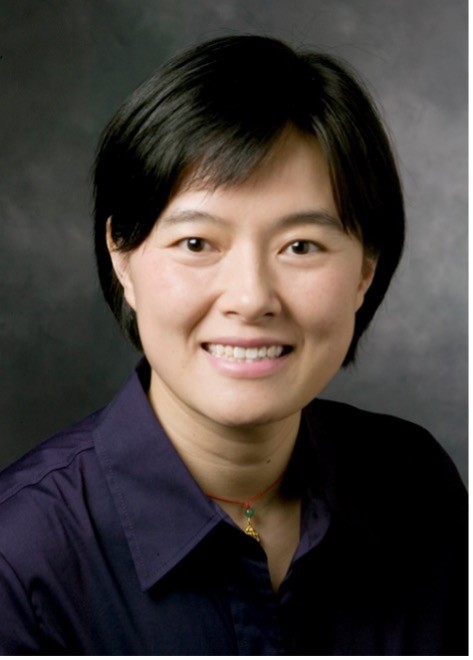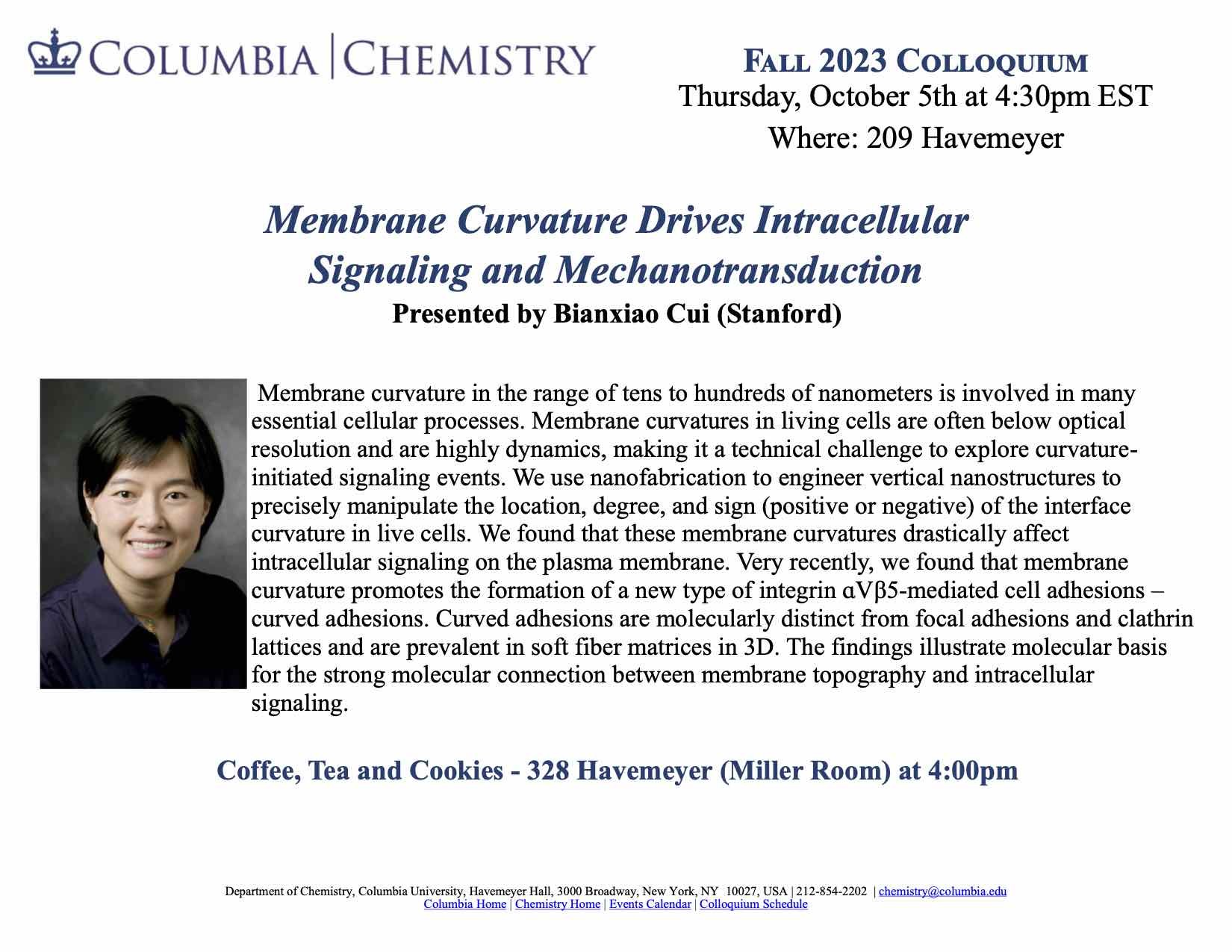Membrane curvature drives intracellular signaling and mechanotransduction
Presented by Prof. Bianxiao Cui
Hosted by Prof. Wei Min
Bio:
Bianxiao Cui is the Job and Gertrude Professor of Chemistry and a fellow of the Wu Tsai Stanford Neuroscience Institute at Stanford University. She holds a Ph.D. degree in Chemistry from the University of Chicago and a BS degree from University of Science and Technology of China. Her main area of interest is to understand how cells and tissues interact with nanoscale topographic features of material surfaces. She also develops optical and electrode-based tools to study electrophysiology and signal transduction in neurons. She also studies membrane curvature and curvature-induced intracellular signaling. Her awards and distinctions include the Ono Pharma breakthrough award, the Barany Award from Biophysical Society, NIH New Innovator Award, NSF CAREER award, NSF Inspire award, Packard Fellowships in Science and Engineering, Hellman Scholar, Searle Scholar Award and Dreyfus New Faculty award
Abstract:
Membrane curvature in the range of tens to hundreds of nanometers is involved in many essential cellular processes. Membrane curvatures in living cells are often below optical resolution and are highly dynamics, making it a technical challenge to explore curvature-initiated signaling events. We use nanofabrication to engineer vertical nanostructures to precisely manipulate the location, degree, and sign (positive or negative) of the interface curvature in live cells. We found that these membrane curvatures drastically affect intracellular signaling on the plasma membrane. Very recently, we found that membrane curvature promotes the formation of a new type of integrin ɑVβ5-mediated cell adhesions – curved adhesions. Curved adhesions are molecularly distinct from focal adhesions and clathrin lattices and are prevalent in soft fiber matrices in 3D. The findings illustrate molecular basis for the strong molecular connection between membrane topography and intracellular signaling.


